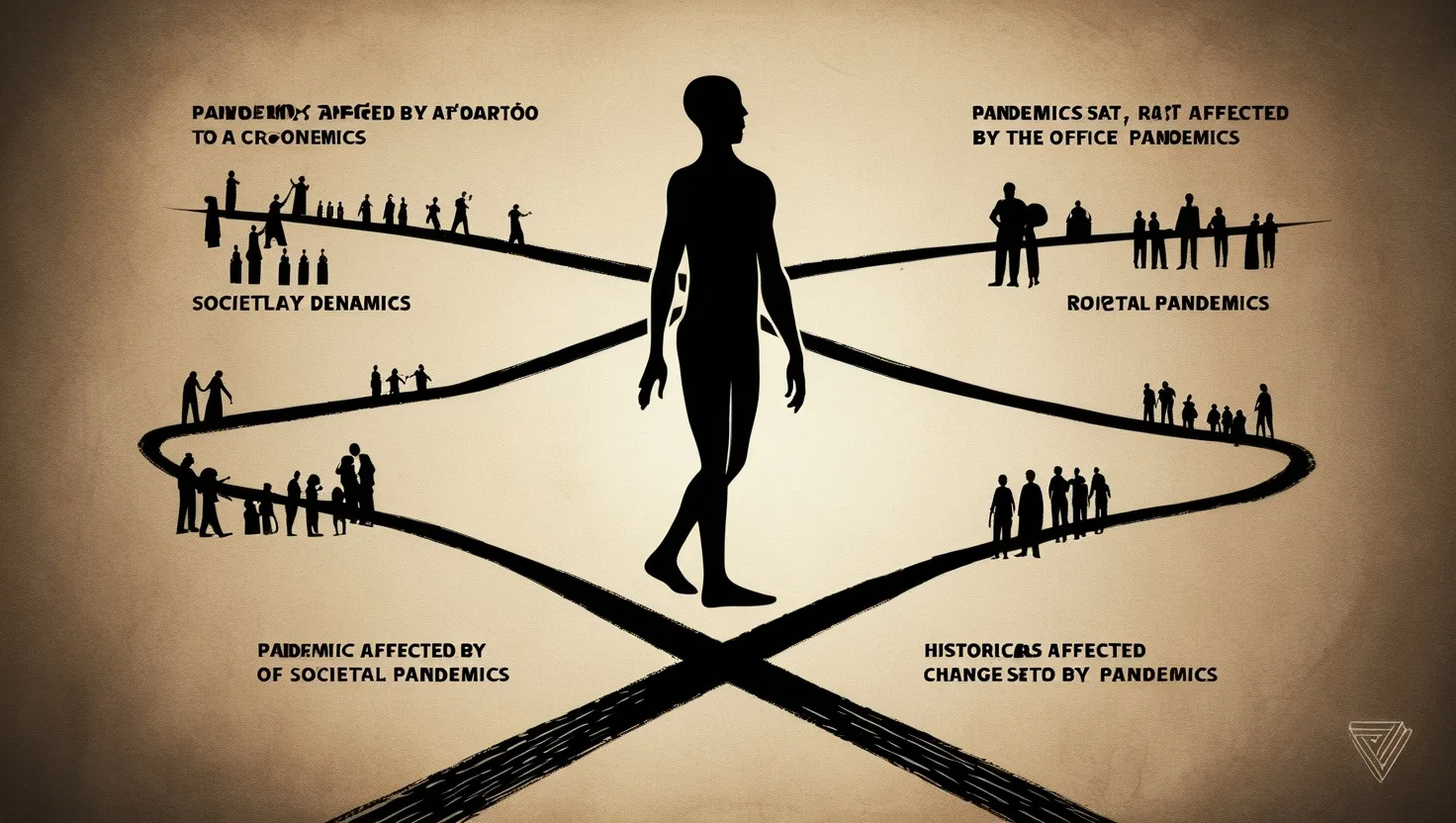As I reflect on the history of pandemics, it becomes clear that these outbreaks have been more than just health crises; they have been catalysts for profound societal changes. Let’s delve into five historical pandemics that have left indelible marks on human society.
The Antonine Plague: A Empire’s Decline
Imagine a world where the mighty Roman Empire, once the epitome of power and stability, begins to crumble under the weight of a mysterious illness. The Antonine Plague, which swept through the empire from 165 to 180 AD, was just such an event. This pandemic, likely caused by smallpox or measles, decimated the Roman population, weakening its military and economy. The empire’s gradual decline and eventual fall can be traced back to this period, as the plague eroded the very foundations of Roman society.
“As the Roman Empire fell, so did the idea of a single, unified Europe,” I often think, pondering the long-term implications. The plague not only killed people but also disrupted trade, led to economic instability, and created a power vacuum that would eventually be filled by various barbarian tribes.
The Black Death: The End of Feudalism
Fast forward to the 14th century, and we find ourselves in the midst of one of the most devastating pandemics in human history – the Black Death. This bubonic plague, which ravaged Europe and the Middle East from 1347 to 1351, claimed the lives of an estimated 30-60% of Europe’s population. The sheer scale of the disaster led to a seismic shift in social and economic structures.
“The plague was a turning point in the history of labor,” notes a historian. As the labor force dwindled, workers gained unprecedented bargaining power. They could demand higher wages and better working conditions, marking the beginning of the end of feudalism. This period saw the rise of modern labor practices and a significant reduction in social and economic inequality.
The Columbian Exchange: A New World Order
When Christopher Columbus set sail for the Americas, he unwittingly brought with him a cargo of diseases that would decimate indigenous populations. Smallpox, in particular, spread rapidly among Native Americans who had no immunity to the disease. This demographic collapse had far-reaching consequences, facilitating European colonization and reshaping the societies of the New World.
“The Columbian Exchange was a two-way street,” I often say, “but the traffic was decidedly one-sided when it came to disease.” The introduction of European diseases not only reduced native populations but also altered the balance of power, allowing European colonizers to establish dominance over the Americas.
The 1918 Influenza Pandemic: A Public Health Awakening
The 1918 Influenza Pandemic was a global catastrophe that killed more people than World War I. This pandemic, which spread across the world in just a few months, highlighted the inadequacies of public health systems at the time. However, it also spurred significant advancements in virology and public health.
“The 1918 flu pandemic was a wake-up call for public health,” a public health expert might say. It led to the establishment of new health policies, the development of vaccines, and a greater understanding of viral diseases. These advancements laid the groundwork for modern epidemic response strategies, saving countless lives in the process.
The HIV/AIDS Crisis: A Social and Medical Revolution
The HIV/AIDS crisis, which emerged in the 1980s, was more than just a health crisis; it was a social and cultural phenomenon. This pandemic highlighted healthcare inequalities, particularly affecting marginalized communities such as the LGBTQ+ population. It also spurred significant medical research and public health policy changes.
“The HIV/AIDS crisis was a catalyst for social change,” reflects an activist. It brought attention to the rights of the LGBTQ+ community and led to a broader discussion about healthcare access and equality. The crisis also accelerated medical research, leading to the development of antiretroviral therapies that have transformed the treatment of HIV/AIDS.
Pandemics as Agents of Change
Pandemics have a way of exposing the vulnerabilities of our societies while also revealing our resilience. As we navigate the complexities of modern health crises, it’s crucial to remember the lessons of the past.
“Pandemics are not just health crises; they are societal crises,” I often think. They challenge our economic systems, our social structures, and our scientific understanding. But they also offer opportunities for growth, innovation, and change.
As the renowned historian Walter Scheidel once noted, “The worst pandemics belong in the same category as the collapse of states, the world wars, and the great communist revolutions.” They are powerful levelers of social and economic inequality, though at a devastating cost.
The Future of Pandemics
As we look to the future, the question remains: What will be the next pandemic to reshape our world? Will we learn from the past and prepare for the challenges ahead, or will we repeat the mistakes of history?
“Pandemics are a reminder of our interconnectedness,” a global health expert might say. “They challenge us to think beyond borders and to work together to build a healthier, more equitable world.”
In the words of Albert Camus, “The only way to deal with an unfree world is to become so absolutely free that your very existence is an act of rebellion.” As we face the uncertainties of the future, let us remember the power of resilience and the importance of learning from our past.
So, what can we do to prepare for the next pandemic? How can we ensure that we build a world that is more resilient, more equitable, and more prepared for the challenges that lie ahead? These are questions we must answer together, as a global community, if we are to create a better future for all.






